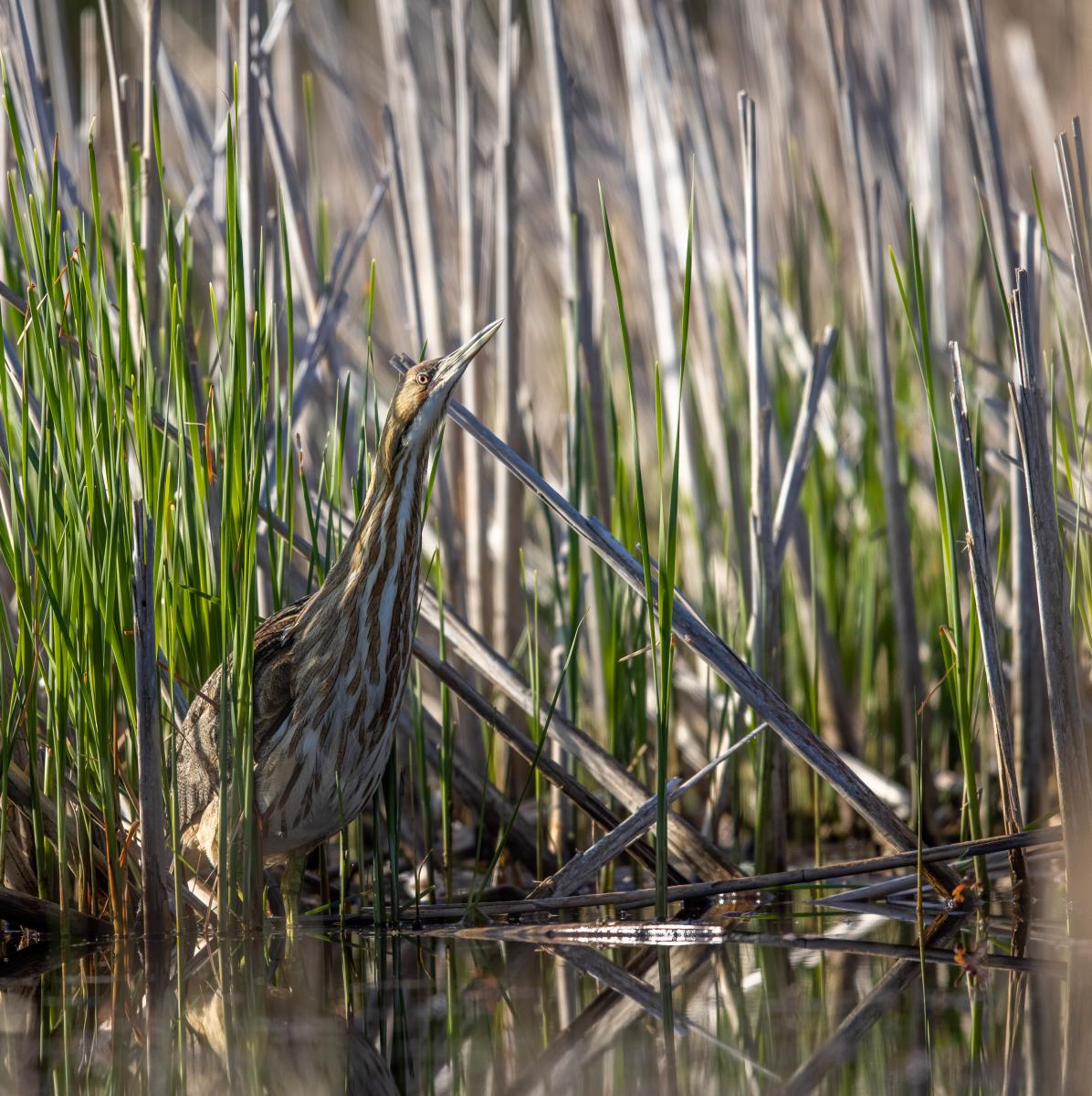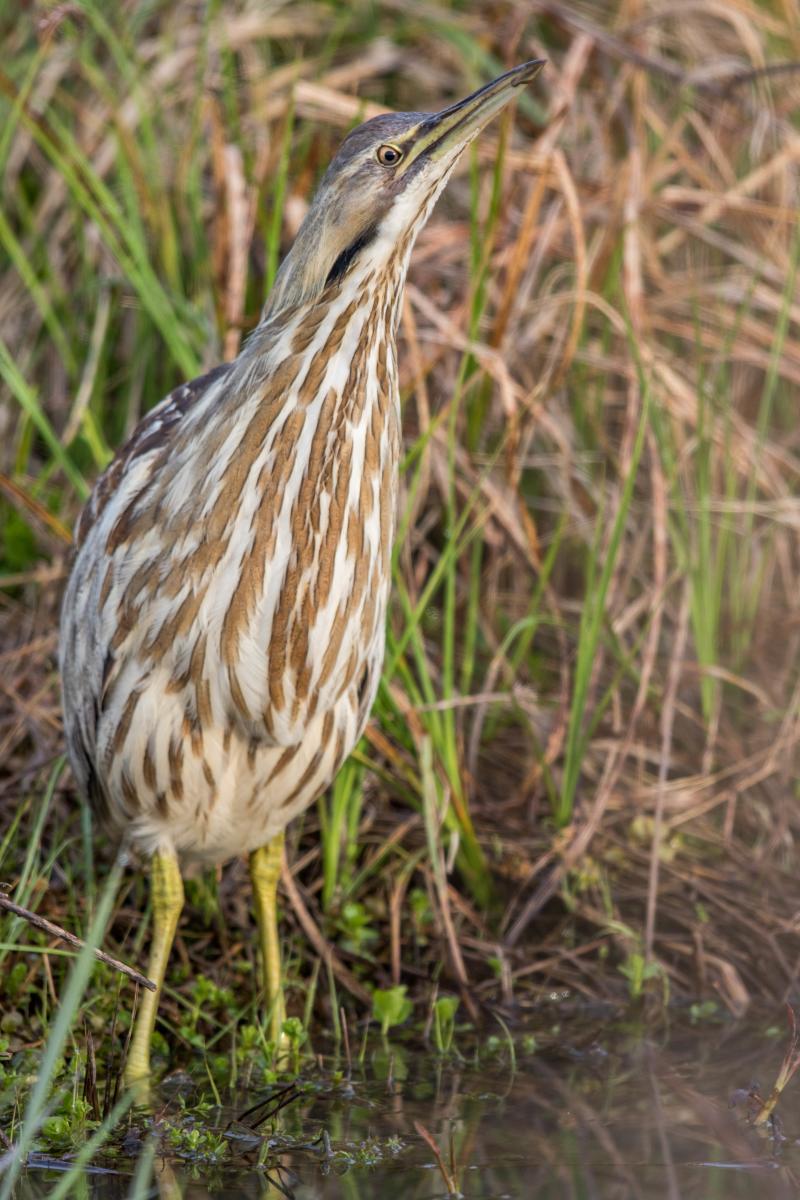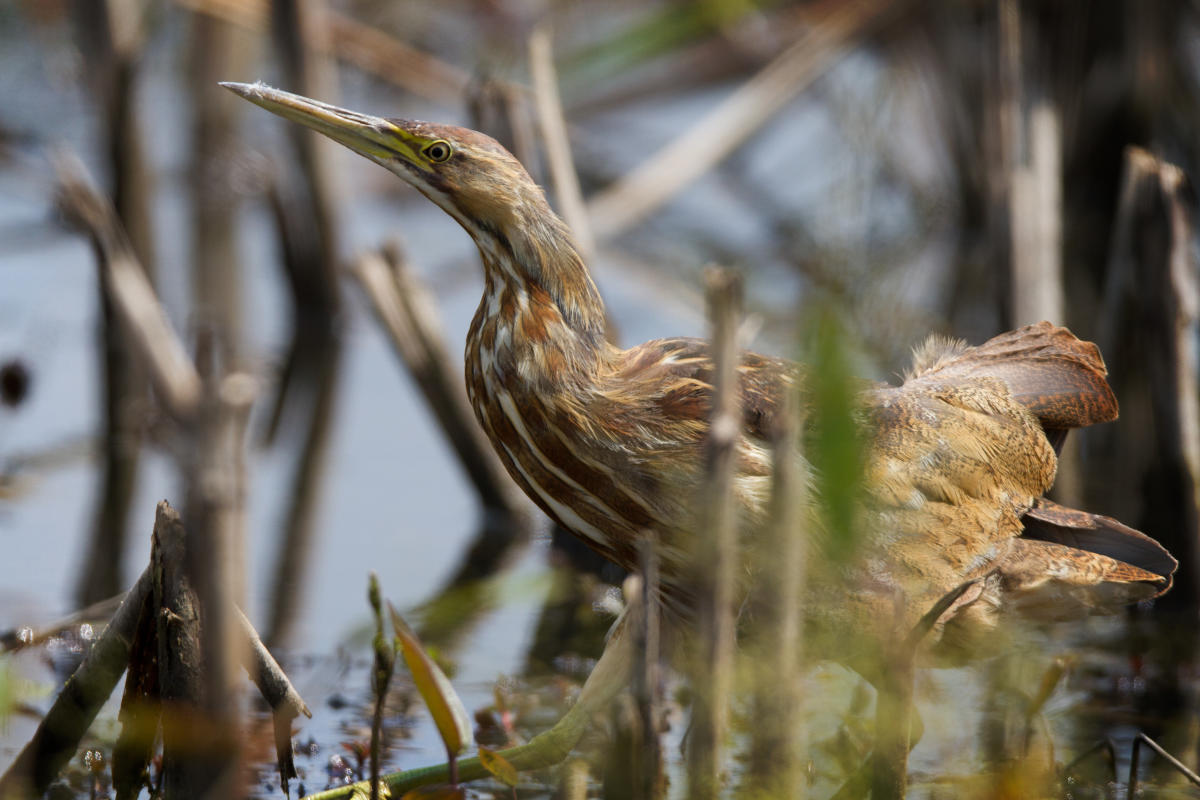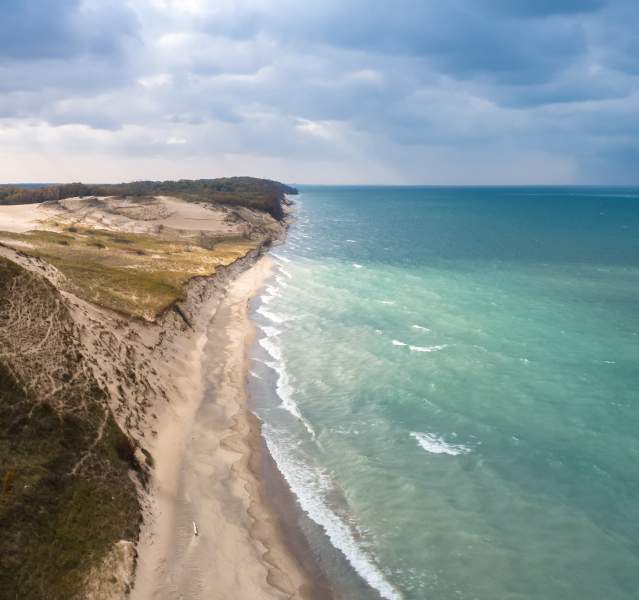On this chilly May morning, I’m bundling up for a pre-dawn excursion. With binoculars round my neck and bird book in hand, I meet up with other Kankakee Sands staff and volunteers for our annual Kankakee Sands Bird Survey in the bison pasture.
 We are looking and listening for all the birds that utilize the prairies of Kankakee Sands—those birds that are just stopping for a brief rest and refuel before journeying further to northern breeding grounds and those birds that stay for the summer. During these surveys, we hear a wide variety of bird calls, but whenever we hear the Ploonk-a-doonk, ploonk-a-doonk – the deep-throated, throbbing song of the American bittern—we always exchange quick and quiet smiles.
We are looking and listening for all the birds that utilize the prairies of Kankakee Sands—those birds that are just stopping for a brief rest and refuel before journeying further to northern breeding grounds and those birds that stay for the summer. During these surveys, we hear a wide variety of bird calls, but whenever we hear the Ploonk-a-doonk, ploonk-a-doonk – the deep-throated, throbbing song of the American bittern—we always exchange quick and quiet smiles.
Thunder-pumper, water-belcher, and mire-drum are other names for this two-foot tall wading bird that weighs just a pound and a half but can send its song a mile and a half out over the prairie. Despite being two feet tall, the American bittern is extremely challenging to spot. The mottled brown feathers blend in with the surrounding marsh vegetation. When it really wants to vanish, it stretches out its stout, boldly striped brown and white neck and points its long, straight bill up to the sky. Driving past, you’d think it was just a reed growing in the marsh.
 Camouflage is a good thing—it keeps the mire-drums safe from predators, such as owls and falcons. Camouflage also allows the bittern to more successfully stalk its prey—water striders, water beetles, water scorpions, dragonflies, tadpoles, frogs, salamanders, and even voles. After a meal, bitterns will regurgitate the undigestible bits of bones and fur in the form of pellets, much like owls do.
Camouflage is a good thing—it keeps the mire-drums safe from predators, such as owls and falcons. Camouflage also allows the bittern to more successfully stalk its prey—water striders, water beetles, water scorpions, dragonflies, tadpoles, frogs, salamanders, and even voles. After a meal, bitterns will regurgitate the undigestible bits of bones and fur in the form of pellets, much like owls do.
Even though bitterns prefer to remain unseen, their deep, strong song allows them to communicate over distances where the vegetation is tall and dense and clues us humans into where they are located.
We’re really lucky to hear the American bittern. Like the herons, egrets, and ibis, it’s a wading bird reliant on large wetlands. We know that the wetlands habitats in the United States are in steep decline. Indiana has lost 87% of its wetlands since the 1780s. The North American Breeding Bird Survey estimates that the American bittern has experienced a shocking 43% decline in the US between 1966 and 2015.
 American bitterns winter in the southern US and California, then migrate north through the central band of the US to summer breeding grounds in the northern half of the United States and Canada. So wetland habitats in all these spaces are vital to preserving the American bittern. Here at Kankakee Sands, TNC has spent more than 20 years restoring prairie and wetland habitat, and having the American bittern here for the summer shows that we’re providing the habitat it needs to breed and rear its young. Thunder pumpers are not the only species to be negatively impacted by the draining of Indiana’s wetlands. The Indiana Department of Natural resources estimates that 900 animal species in Indiana are dependent on wetlands for some portion of their life cycle, and of these 60 are listed as endangered, threatened, or of special concern in Indiana.
American bitterns winter in the southern US and California, then migrate north through the central band of the US to summer breeding grounds in the northern half of the United States and Canada. So wetland habitats in all these spaces are vital to preserving the American bittern. Here at Kankakee Sands, TNC has spent more than 20 years restoring prairie and wetland habitat, and having the American bittern here for the summer shows that we’re providing the habitat it needs to breed and rear its young. Thunder pumpers are not the only species to be negatively impacted by the draining of Indiana’s wetlands. The Indiana Department of Natural resources estimates that 900 animal species in Indiana are dependent on wetlands for some portion of their life cycle, and of these 60 are listed as endangered, threatened, or of special concern in Indiana.
May is American Wetlands Month. Celebrate the month by visiting Kankakee Sands to look and listen for the water-belcher. Try a visit to the Bird Viewing Area, located west of US 41 on CR 400 N. The bitterns have been heard from that location. They have also been seen in the ditches along the Bison Viewing Area entrance. As you drive the roads of Kankakee Sands, roll those windows down and listen for that unmistakable song. https://www.allaboutbirds.org/guide/American_Bittern/sounds
Have your passengers be on the lookout for feathered reeds with eyeballs!
The Nature Conservancy’s Kankakee Sands is an 8,300-acre prairie and savanna habitat in Northwest Indiana, open every day of the year for public enjoyment. For more information about Kankakee Sands, visit www.nature.org/KankakeeSands or call the office at 219-285-2184.

